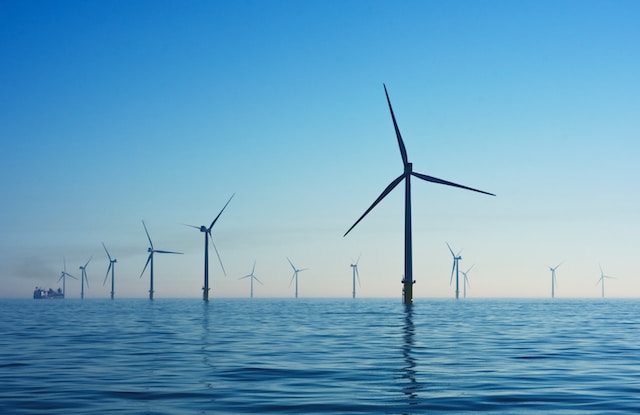Powering Tomorrow: The Unstoppable Rise of Renewable Energy

The global energy landscape is undergoing a transformative shift, spurred by the urgent need to combat climate change and transition toward more sustainable and environmentally friendly energy sources. The rise of renewable energy has become a defining feature of this transition, as the detrimental effects of fossil fuels on the environment become increasingly evident. This comprehensive article explores the multifaceted journey of renewable energy, from its historical context and technological advancements to the economic and environmental implications it presents, while also delving into the challenges it must overcome and its promising future outlook.
Renewable energy is fundamentally defined by its ability to be naturally replenished and to have minimal environmental impacts. This contrasts starkly with fossil fuels, whose combustion releases harmful emissions and contributes to global warming. The article identifies several key driving factors behind the escalating prominence of renewable energy sources. Heightened global awareness of climate change and its far-reaching consequences has led governments, organizations, and individuals alike to actively seek cleaner alternatives. Moreover, breakthroughs in technology and substantial cost reductions in renewable energy technologies have rendered these options increasingly accessible and competitive in the global energy market.
Tracing back through history, the article discusses the longstanding dominance of fossil fuels as the primary energy sources, despite their environmental drawbacks. These drawbacks, which include air pollution, water contamination, and greenhouse gas emissions, have amplified the search for more sustainable energy options. Even in the 19th century, scientists and inventors recognized the potential of renewable energy sources. The photovoltaic effect, a key development in solar power technology, paved the way for modern solar panels. Similarly, early windmills and water mills demonstrated the viability of wind and hydropower.
However, the initial adoption of renewable energy sources faced a multitude of hurdles. High costs, limited technological advancements, and the entrenched influence of the fossil fuel industry impeded the widespread embrace of renewable energy. The intermittent nature of renewable sources, such as solar and wind, also posed challenges in terms of reliability and integration with existing energy grids.
Advancements in renewable technologies have since addressed some of these challenges, leading to the rise of solar, wind, hydropower, and geothermal energy. Solar power now employs photovoltaic systems and concentrated solar power technology to efficiently convert sunlight into electricity. Wind power, with onshore and offshore wind farms, offers scalable and cost-effective energy generation. Hydropower, whether through traditional methods or innovative run-of-river systems, taps into the power of flowing water. Geothermal energy harnesses the Earth’s internal heat to produce electricity through deep drilling processes.
Renewable energy’s growth has been further propelled by global investments, driven by commitments to combat climate change. International agreements like the Paris Agreement provide the framework for renewable energy development, with various countries emerging as leaders in adoption. Germany, China, and the United States have made significant strides in transitioning to renewable sources. However, emerging markets face distinct challenges, including limited financial resources and infrastructure constraints.
Economically, renewable energy investments stimulate job creation and economic growth. The labor-intensive nature of the renewable energy sector, encompassing manufacturing, installation, maintenance, and research, generates a wide range of employment opportunities. Moreover, the cost competitiveness of renewable energy with fossil fuels has improved significantly. Technological advancements and economies of scale have driven down the costs of renewable technologies, rendering them viable and attractive options for energy production.
The economic implications extend to energy infrastructure investment diversification. Unlike fossil fuels, which necessitate continuous extraction and transportation, renewable energy generates power through sustainable methods. This reduced reliance on finite resources contributes to energy security and environmental sustainability. However, the transition to renewable energy has also disrupted traditional energy sectors, particularly coal and oil, potentially resulting in job losses and the need for thoughtful transition plans.
The environmental benefits of renewable energy are substantial, with mitigation of climate change at the forefront. Renewable sources produce little to no greenhouse gas emissions during electricity generation, offering a cleaner alternative to fossil fuels. Additionally, the reduction of air pollution and its associated health benefits cannot be overstated. Traditional energy production contributes to harmful air pollutants, resulting in respiratory diseases and other health issues. Switching to cleaner sources promotes better air quality and public health.
Furthermore, renewable energy projects have a significantly lower impact on ecosystems compared to fossil fuel extraction and power generation. Traditional energy practices often result in habitat destruction, water pollution, and damage to wildlife. In contrast, well-designed and operated renewable energy projects can minimize disruption to ecosystems, preserving biodiversity.
Water conservation is another vital aspect, as renewable energy significantly reduces water consumption compared to fossil fuel-based power generation. Traditional energy production requires substantial amounts of water for cooling and extraction processes, which can strain water resources. Renewable energy, such as solar and wind power, eliminates the need for water-intensive processes, promoting water conservation and sustainable practices.
Nevertheless, the adoption of renewable energy sources is not without its challenges. Energy storage and grid integration are key concerns, as renewable sources can be intermittent and unpredictable. Unlike fossil fuels, which provide continuous power, renewable sources’ variability requires innovative energy storage technologies and upgraded grid infrastructure to ensure consistent supply.
Scalability and intermittency issues are also critical considerations. As demand for renewable energy grows, addressing intermittency is essential to maintain a stable energy supply. Advances in energy storage and smart grid technologies hold promise in overcoming these challenges.
The role of policy frameworks and regulatory support cannot be underestimated. Governments play a crucial role in accelerating the transition to renewable energy by implementing favorable policies that incentivize investment and create a stable environment for renewable energy growth. Clear permitting processes and supportive regulations are essential to navigate the transition successfully.
Public perception and social acceptance are also pivotal in the widespread adoption of renewable energy. Educating the public about the benefits of clean energy, dispelling misconceptions, and addressing concerns can foster positive attitudes and bolster social support for renewable energy initiatives.
Looking forward, the future of renewable energy is promising, with ongoing technological advancements and innovations expected to further reshape the energy landscape. Continued breakthroughs in materials science, energy storage, and grid integration hold the potential to enhance efficiency and reliability across renewable energy sources.
Market forecasts indicate that the renewable energy sector is set to experience substantial growth in the coming years. The falling costs of renewable technologies, coupled with supportive policies and a growing global environmental consciousness, contribute to this growth trajectory. Breakthrough technologies, such as advanced solar cells, floating wind turbines, and enhanced geothermal systems, possess the potential to revolutionize the renewable energy sector, significantly increasing capacity, efficiency, and viability.
In the broader context, renewable energy’s role in achieving global energy targets is paramount. The United Nations’ Sustainable Development Goals and the goal of limiting global warming to well below 2 degrees Celsius are heavily reliant on the adoption of renewable energy sources. Transitioning to renewable energy is a critical step toward a sustainable and carbon-neutral future.
In summary, the rise of renewable energy marks a significant turning point in the global energy landscape. From early recognition of its potential to overcoming obstacles and challenges, renewable energy sources have evolved into a cornerstone of sustainable development. The article’s key takeaways emphasize the definition and significance of renewable energy, its driving forces, economic and environmental implications, challenges, and promising future prospects. The significance of renewable energy in shaping a sustainable future cannot be understated, as it contributes to reduced emissions, economic growth, environmental conservation, and energy security. Ultimately, renewable energy is at the forefront of the global pursuit of a more sustainable and resilient energy future.




